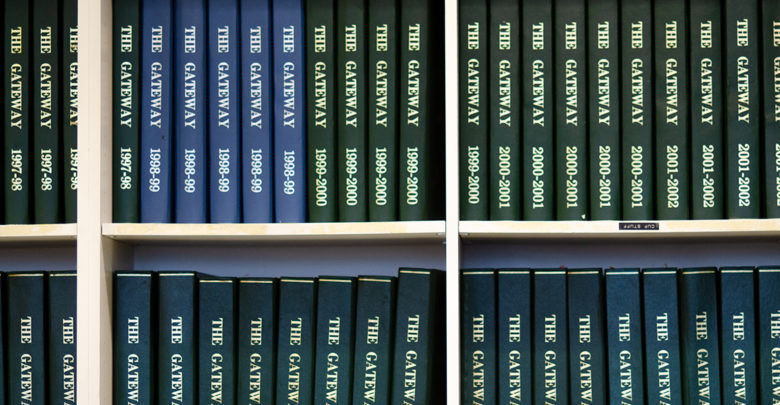From the Archives: Students’ Union sells HUB mall for one dollar
While the Ring Houses were sold for one dollar each last year, what many students don't know is HUB mall was sold to the university for the same low price in 1976.
 Helen Zhang
Helen ZhangFrom the Archives is The Gateway’s ongoing series of recounting historical articles written by the publication from years past.
What all students don’t know about HUB Mall, is that it originally stood for “Housing Union Building” and was a project started and funded by the Students’ Union. Built in response to a lack of affordable housing for students and an increasingly large student body at the University of Alberta, HUB was a natural continuation of Students’ Union Building (SUB) that could also include housing.
Construction however, ended up one million over budget and HUB continued to struggle financially as the Students’ Union struggled to fill the occupancy. In 1975, student fees were used to bail the project out — at a rate of $10 per student each year. The university ultimately bought the building from the Students’ Union for one dollar.
The following article is taken from the April 7, 1976 edition of The Gateway:
Whatever the Students’ Union had been haggling over with the university regarding the transfer of HUB, it certainly couldn’t have been the price.
The Board of Governors decided Friday that the price was right and purchased the building. Lock, stock, and barrel for one dollar — finally removing the financial and administrative burden from the Students’ Union.
All the major negotiation points were contained in a four page motion from the Board’s finance committee outlining the conditions under which the university would assume ownership of HUB, and at what cost.
The entire building, including all leases, furniture, shattles, assents and debts are now the responsibility of the university, although a final master agreement must be reached by June 30 on some specific details to make the transfer permanent.
Eileen Gillese, SU vp (finance and administration) told The Gateway that residence policies, a final audit, and other financial details must be completed, or HUB could be tossed right back into the SU’s lap.
However, Lorne Leitch, university vp (finance and administration) said he didn’t expect much disagreement on most remaining points, though he didn’t specify what they were.
The motion contains a clause specifying that the remainder of a $130,500 grant from the provincial government for HUB will also be transferred but Gillese said Friday’s agreement made no mention as to the transfer of interest on the unexpended portion of the grant.
Leitch said it would probably be transferred under the master agreement. “When you take over a piece of real estate, you assume its assets as well as its deficits,” he said.
Housing and Food Services will administer the university’s new acquisition, and at the Board’s direction will apply a ten per cent rent increase, effective August 1. Next January will see a further nine per cent rent hike, in an effort to make the apartment sector self sufficient. Rents will range from $156 per month for a one person unit (unfurnished) to $336 per month for a four person unfurnished suite.
Housing and Food will also offer employment to all staff in HUB previously employed by the Students’ Union.
Relief was the main emotion within the Students’ Union administration as the transfer become imminent. HUB having been long decried as a drain on the SU’s money and manpower resources.
At Friday’s meeting, one Board member asked if another clause could be added to withhold the Students’ Union from embarking once more on the road to financial ruin through some other grand scheme, alluding to the SU’s having “learned its lesson.”
“I take objection to that,” said past SU president Graeme Leadbeater, citing the reason for the transfer as being HUB’s administrative drain on the Students’ Union. The SU is seeking to return to its old status as a service organization, he said, and the university with its larger administrative capabilities could more easily manage HUB.
Historically, HUB has been less than an investor’s dream. Construction ended in 1971, after unforeseen increases in building costs. Commercial tenants, contrary to most predictions, were slow to arrive, and even then most could not pay full rent under their leases.
These main problems, combined with more unforeseen high costs in maintenance and administration almost forced the Students’ Union into bankruptcy in 1974-75. Were it not for a million-dollar government grant, the SU would have likely fallen under the auctioneer’s hammer.
Gene Borys, last year’s SU vp (finance and administration) did much of the negotiating for the Students’ Union in the transfer proceedings, and has been hired by the SU to continue as a resource person until the master agreement is completed.



